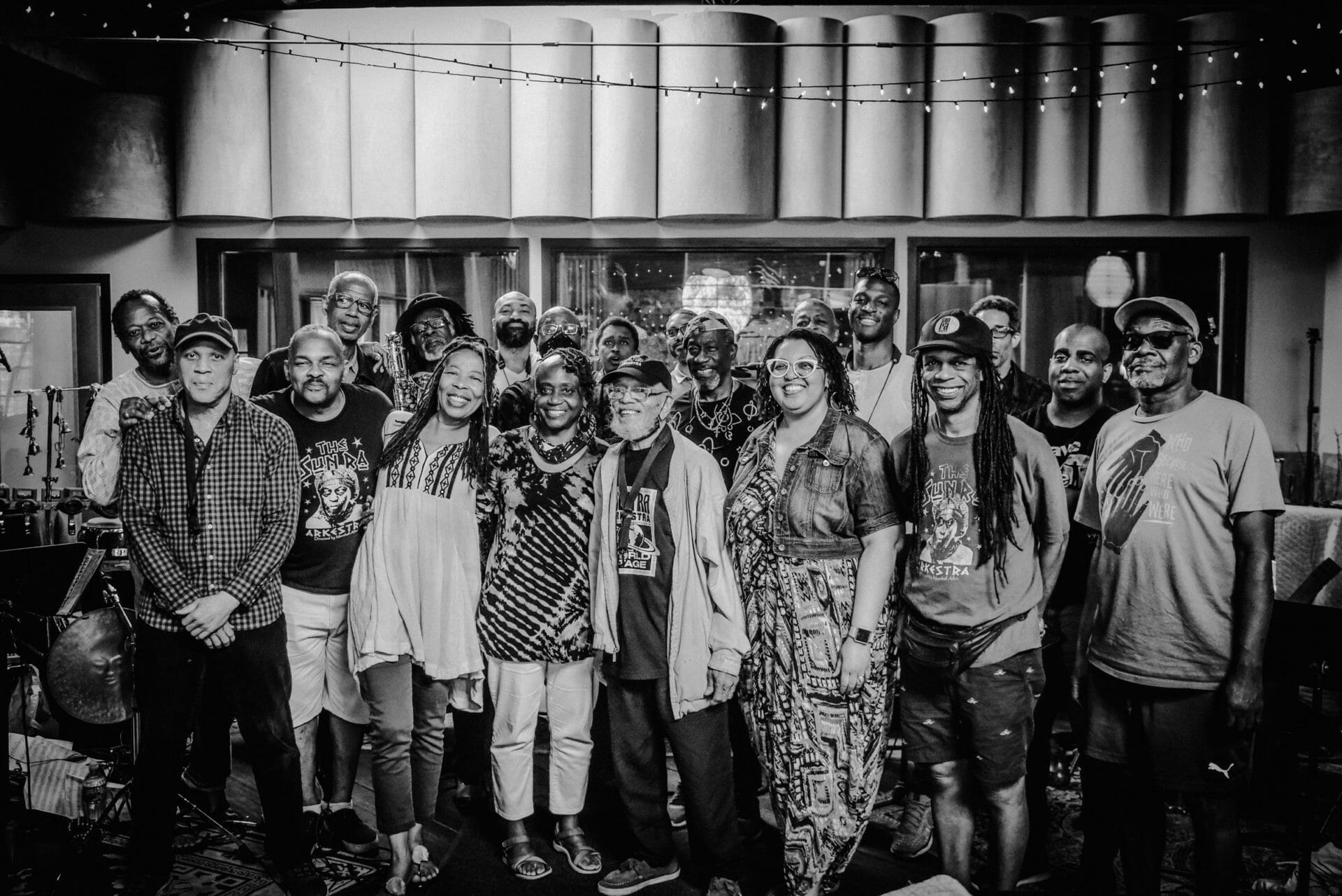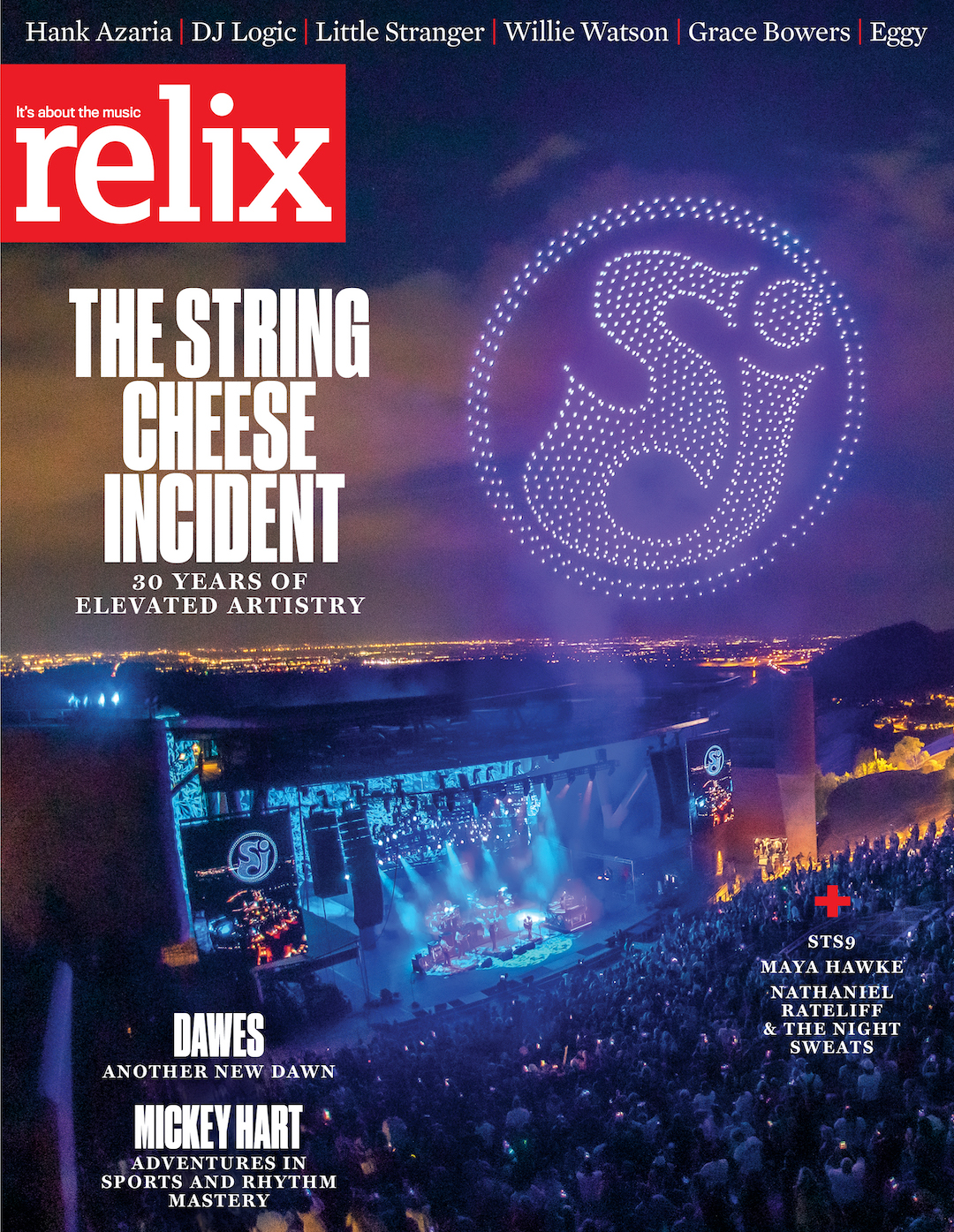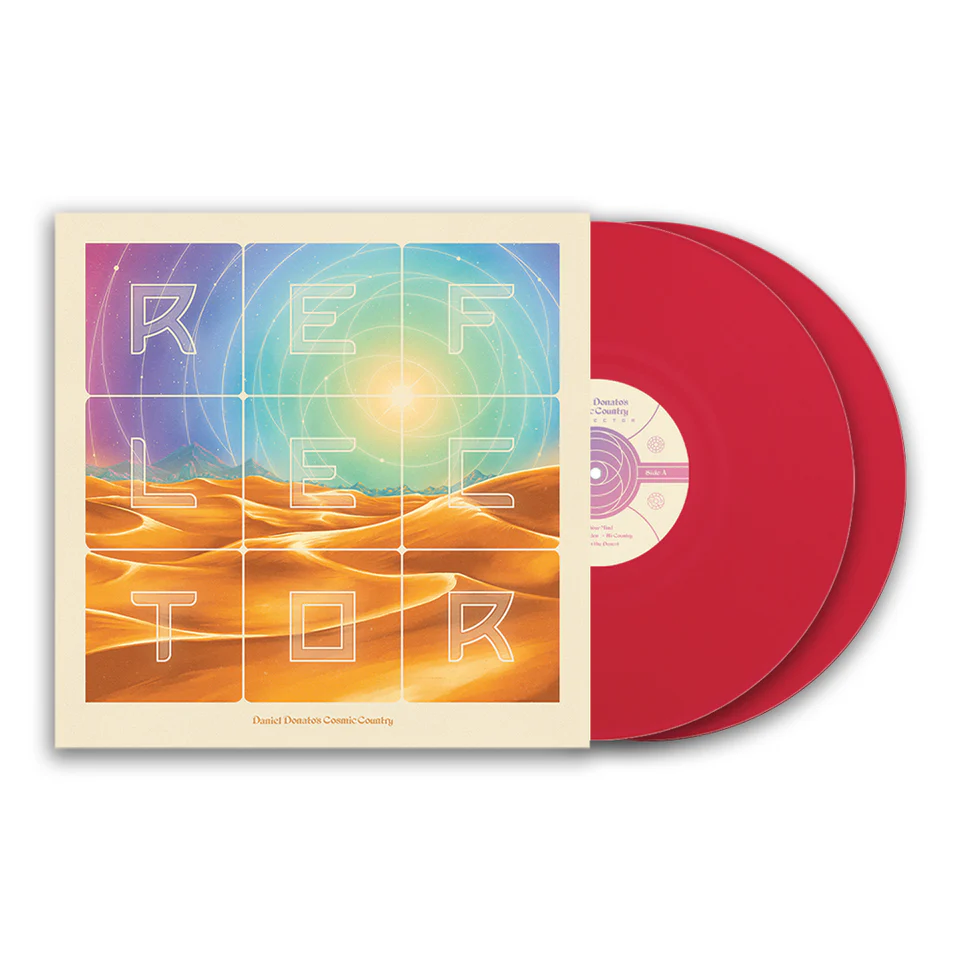Sun Ra Arkestra: Space Is Still The Place

photo: Vladimir Radojicic
***
“You can’t use your mind to play this music; you’ve got to use your spirit. That’s what Sun Ra taught me, and I truly believe that,” trumpeter Michael Ray says, as he looks back on his longstanding membership in the Arkestra musical collective.
“When I first met him, I was playing with a group called John Minnis’ Big Bone Band at an outside festival. Sun Ra was on the bill, and I had never really heard about him. But I noticed that every musician had a briefcase filled with music. They had about eight saxes and fire eaters and dancers and percussion. I was pretty well knocked out. Then I saw him on the trolley, and I said, ‘Mr. Ra, I really enjoyed your performance.’ He said, ‘Yeah, well come rehearse. We’re getting ready to go to Egypt.’ But at that time, I was also playing with a group called The Delfonics, and we were working steadily in Philly, so I didn’t make it.”
The two crossed paths again some months later, and Sun Ra extended a second invitation. This time, the trumpet player took him up on his offer.
“When I walked into the house,” Ray recalls, “there was all this Egyptian art, keyboards and amps, along with these milk crates filled with music cassettes and tapes—when you looked in the refrigerator, he even kept crates of music in there. Then he said to me, ‘I know everything you need to know about music.’ So that was my beginning and, nearly 50 years later, I’m still here.”
Born Herman Poole Blount in 1914, Sun Ra was a visionary explorer whose otherworldly aesthetic is manifested in his song “Space Is the Place,” which later became the title of John Szwed’s acclaimed biography. Blount performed in jazz combos with Fletcher Henderson and Coleman Hawkins before changing his name in 1952 and originating his innovative Afrofuturism. He engaged like-minded players such as tenor saxophonist John Gilmore and alto sax player Marshall Allen, who helped enlist additional acolytes. They relocated to New York’s East Village before moving into a Philadelphia rowhouse in 1968, where they lived communally at the Arkestral Institute of Sun Ra. From this base of operations, they released over 100 albums, while writing more than 1,000 songs.
Ray’s initial performances with the group took place at their three-story Germantown home, where rigorous practice sessions were often initiated at a moment’s notice.
The trumpet player recollects, “We would rehearse for 10-12 hours every day. No one wanted to be late because Sun Ra would tailor the music and the parts that you play to your spirit. So if, all a sudden, you showed up, then he would stop everything and say, ‘Now, I’ve got to change the arrangement.’ He would also put on a big pot of moon stew and we’d be smelling that stuff while rehearsing. He’d say, ‘Mike, go back there and put in some okra,’ and when we were finally finished, the soup would be ready.
“Looking back, it’s the rehearsal time that I miss the most, although I can remember telling him: ‘I want to take my girlfriend to the movies.’ And he’d say, ‘Well, perhaps, but we’re fighting a battle on this planet. You’ve got to be swinging on your horn. Now play this.”
Sun Ra “returned to the astral plane”—as Ray describes it—in 1993. Leadership then fell to Gilmore until his own death two years later. Ever since then, Allen, who turned 98 in May, has guided the group.
“He’s a double Gemini too, just like Sun Ra,” Ray observes. “He’s always creating. He’s got 300 songs he’s written that we don’t even play.”
Two of Allen’s compositions that the group does perform appear on Sun Ra Arkestra’s new album, Living Sky. Allen, Ray and 17 other musicians assembled in June 2021 at Rittenhouse SoundWorks in Philadelphia to record these songs, along with some rearranged material from the vast Sun Ra catalog.
While the Arkestra remains active in the live setting, the group had not released a new recording in two decades until 2020’s Grammy-nominated Swirling. The follow-up came about at the behest of Ahmet Ulug, a Turkish music promoter who brought Sun Ra to Istanbul in 1990 and continued to produce shows with the Arkestra. Although Ulug had retired from the industry, he recently opted to return, creating Omni Sound, which he named after some words of salutation that Sun Ra had written while in Turkey: “Omniverse is the totality of all universes and you are welcome to be citizens of Omniverse.” Ulug commissioned the Arkestra to create a new work that would be “spiritual and hypnotic and to that effect down tempo, melodic and grooving . . . from the kora to EVI; ancient to the future. Music that is accessible and healing in the COVID era.”
The resulting record certainly achieves that goal. Allen’s winsome “Firefly” also contains some wily dissonant elements. The same is true of “Marshall’s Groove,” which develops slowly and unfolds over 11 minutes. “Somebody Else’s Idea” burbles beneath the surface, until it breaches, led by Ray and Allen in various passages. “Day of the Living Sky” and “Night of the Living Sky” prove both churning and cerebral. The closing “When You Wish Upon a Star” feels almost elusive at times. All told, Living Sky remains stirring yet it’s still a salve.
There’s more above the horizon as well. The group is setting its sights elsewhere in the solar system with a project that Ray says “involves studying the tones of the planets and setting them to music.”
Meanwhile, Allen continues to lead from his perch at the Arkestral Institute of Sun Ra, which the Philadelphia Historical Commission designated a historic landmark earlier this year.
Michael Ray emphasizes a creative continuum. “Sun Ra would ask you to play something, then he’d say, ‘Well that’s exactly right. But it’s wrong.’ He’d go on and talk about nuances. Marshall also embraces the spirit of the moment. He’s always reminding us to ‘play what you don’t know.’ That says it all to me.”



















